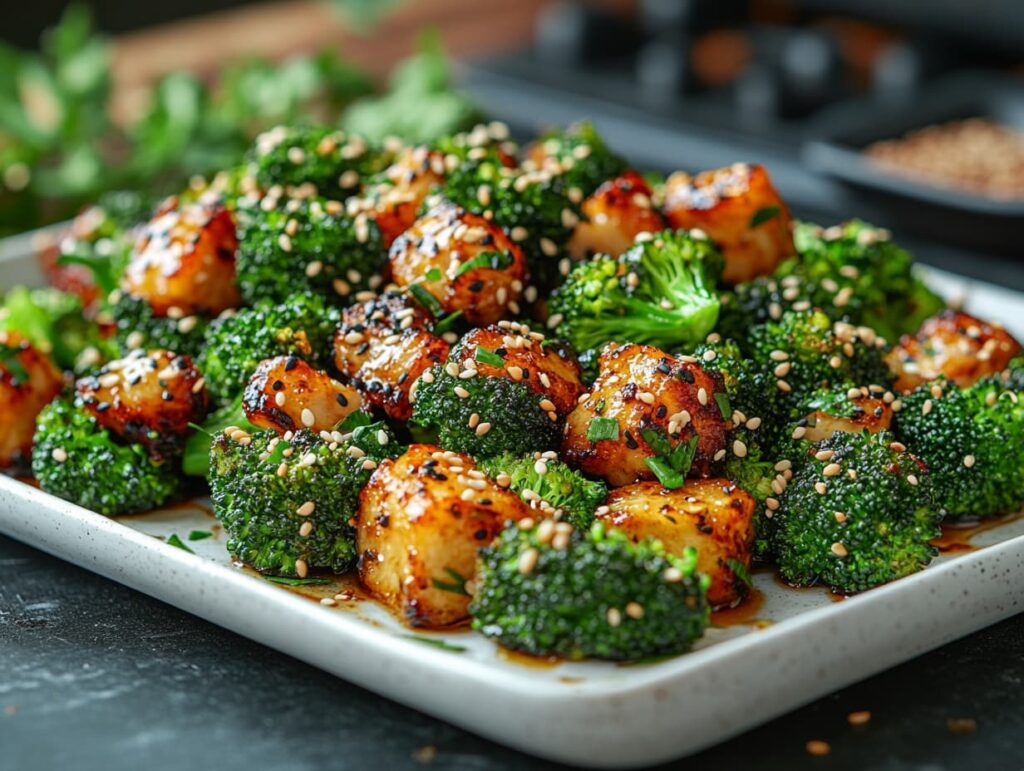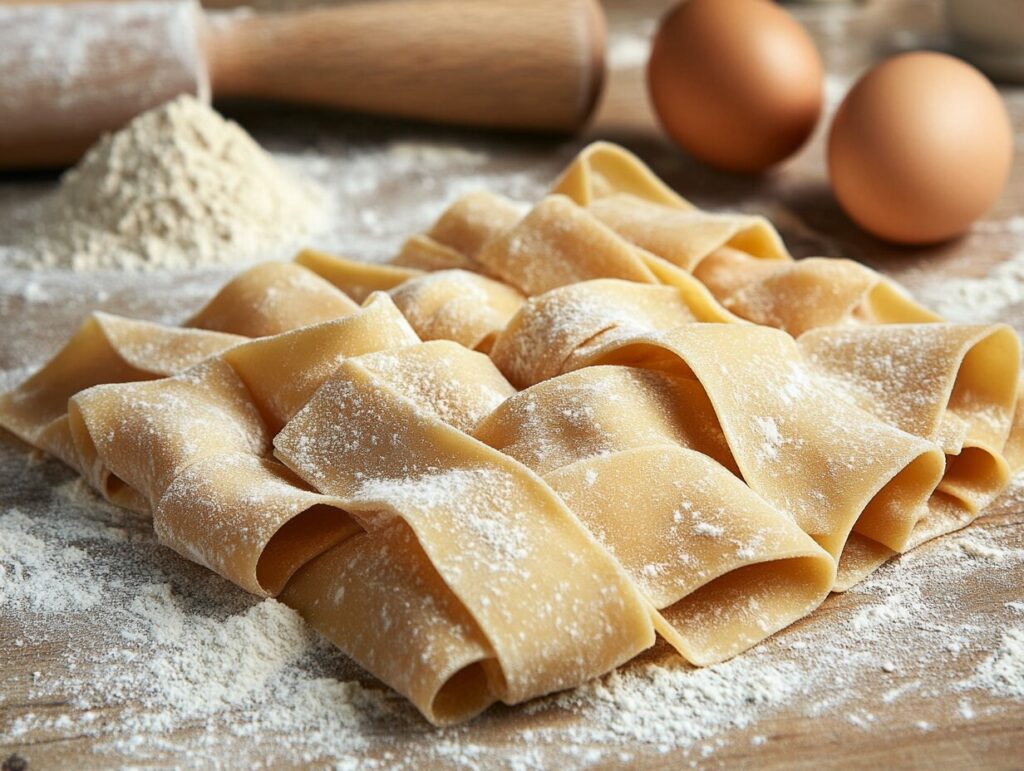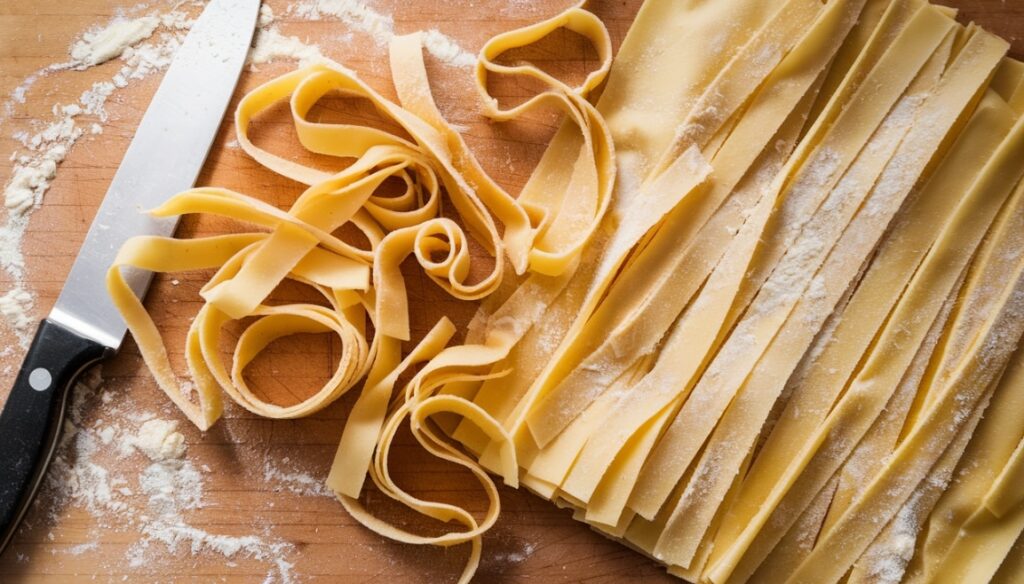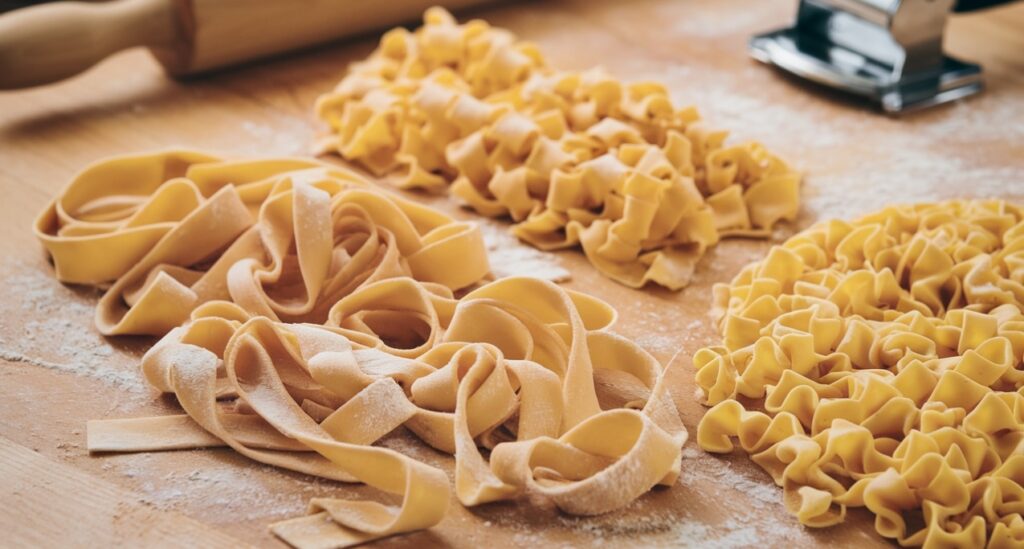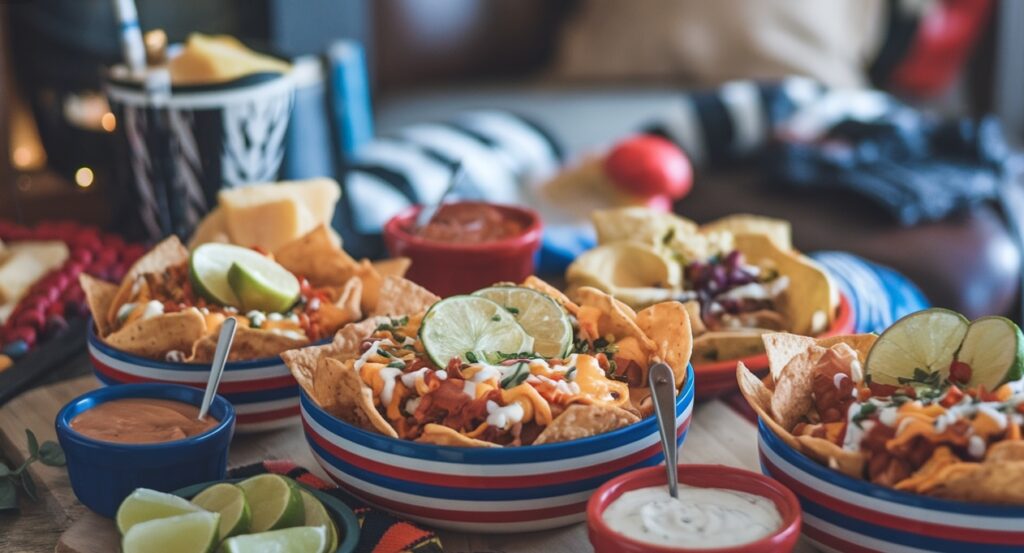Have you ever wondered about the story behind broccoli? Learn more about the origins of broccoli and why it’s so loved on our plates.. But have you ever stopped to wonder where it actually came from? Is broccoli a natural wonder of the plant world, or is it a human-engineered marvel? Today, we’re diving into the fascinating story behind broccoli’s origins, busting myths, and answering the age-old question: Is broccoli man-made or natural?
Introduction to Broccoli: Is Broccoli Man-Made or Natural?
The Popularity of Broccoli: A Man-Made Marvel?
Broccoli is one of those veggies that seems to pop up everywhere. From hearty casseroles to fresh salads, it’s a kitchen staple for many. Why? Because it’s not just versatile but also packed with nutrients. Parents often tell kids to eat their broccoli because it’s “good for you,” but how did it earn this reputation? To dive deeper into the fascinating history of broccoli and its rise in popularity, explore our dedicated page.
Fun fact: Broccoli became especially famous in the United States when former President George H.W. Bush declared he wasn’t a fan. That bold statement only made the vegetable more popular! It even sparked curiosity among many, leading people to ask, “Is broccoli man-made or natural?”
Nutritional Value of Broccoli: Nature’s Superfood or Human Creation?
Let’s face it—broccoli isn’t just food; it’s fuel. This superfood is loaded with vitamins like C, K, and A, along with fiber, antioxidants, and even a decent dose of protein. It’s like nature’s multivitamin, but it tastes a bit better (if you cook it right). Many wonder, “Is broccoli man-made or natural?” Regardless of its origins, eating broccoli regularly can:
- Boost your immune system.
- Improve digestion.
- Even help lower the risk of chronic diseases like cancer and heart disease.
Isn’t that wild? Something so simple can do so much.
Did you know that broccoli can boost your immune system and improve digestion? Discover our recipes to get the most out of this superfood.
The Origin of Broccoli: Is It Man-Made or Natural?
Broccoli in History
If we trace broccoli’s roots, we’re heading straight to the Mediterranean—Italy, to be exact. The name “broccoli” actually comes from the Italian word broccolo, meaning “the flowering crest of a cabbage.” This ties into the question, “Is broccoli man-made or natural?” Its origins reveal a blend of nature and human cultivation, making its history as fascinating as its taste.
Ancient Romans were growing and eating broccoli as early as 2,000 years ago. They considered it a delicacy, often boiling it with spices or serving it with wine. Sounds fancy, right?
Explore the history of broccoli, from its Mediterranean roots to its staple status in modern kitchens.
Early Cultivation Practices
Broccoli didn’t just sprout out of the ground as the lush, tree-like veggie we know today. Farmers used selective breeding—a process where plants with desirable traits are chosen for reproduction—to create what we now recognize as broccoli. This careful cultivation answers the question, “Is broccoli man-made or natural?” It’s a perfect example of how humans have worked with nature to improve crops over generations.
Is Broccoli Man-Made?
Understanding “Man-Made” Foods: What Makes Broccoli Unique?
Before we dig in, let’s clear something up. When people say “man-made,” they often think of something artificial, like synthetic materials or lab-grown meat. But in the plant world, it’s a little different. This distinction is key to answering the question, “Is broccoli man-made or natural?” Man-made plants are often the result of selective breeding—a natural process guided by humans to enhance certain traits.
Think of it like matchmaking for plants. Farmers essentially played Cupid, pairing plants with great characteristics to create a new, improved version. No test tubes or sci-fi experiments here!
Curious whether broccoli is natural or man-made? Read our article about the selective breeding process that shaped this iconic vegetable.
How Broccoli Was Developed: Natural Evolution or Human Innovation?
Broccoli is part of the Brassica oleracea family, which also includes kale, cauliflower, cabbage, and Brussels sprouts. These plants all share the same ancestor—a wild mustard plant. This history helps address the question, “Is broccoli man-made or natural?” Farmers in ancient times took this wild plant and selectively bred it to emphasize specific traits. In broccoli’s case, the large, edible flower heads became the star of the show.

Over centuries, this process turned the humble wild mustard into the broccoli we see today. It’s man-made, yes, but in a natural, hands-on kind of way.
Is broccoli man-made or natural? By exploring its selective breeding process, we see a blend of nature and human effort creating this nutritious marvel.
The Role of Selective Breeding: Is Broccoli Man-Made or Natural?
Selective breeding isn’t just about looks—it’s also about making plants tastier, more nutritious, and easier to grow. This process answers the question, “Is broccoli man-made or natural?” In broccoli’s case, farmers prioritized:
- Larger flower clusters.
- A milder, more palatable taste.
- Resistance to pests and diseases.
Doesn’t that sound like a win-win for everyone involved? 🌱
“Selective breeding is like nature’s fine-tuning, with a little help from us. It’s about enhancing what’s already there—not creating something unnatural.”
Natural vs. Artificial: Clearing the Confusion About Broccoli
Comparing Broccoli to Wild Ancestors
Broccoli’s wild ancestor, the mustard plant, looks nothing like the green florets we know today. It’s scraggly and unimpressive, but it laid the foundation for a vegetable powerhouse. This transformation helps answer the question, “Is broccoli man-made or natural?” Think of it like a rough draft—not much to look at, but full of potential.
Avoid common misconceptions: broccoli is not a GMO. Learn more about how it was naturally developed through traditional farming techniques.
Misunderstandings About Broccoli
Some people mistakenly think broccoli is genetically modified (GMO). Here’s the truth: Broccoli is NOT a GMO. It’s the result of traditional farming techniques, not genetic engineering. That means no scientists were splicing DNA to create it—just hardworking farmers refining nature over generations.
“Broccoli is a testament to human ingenuity and patience, not a product of modern labs.”
Common Myths About Broccoli: Man-Made or Natural?
Is Broccoli Healthy for Everyone?
Broccoli’s reputation as a superfood is well-deserved, but is it the perfect veggie for everyone? Not quite. Some people experience digestive discomfort after eating broccoli. Why? It’s high in fiber and contains natural compounds like raffinose, a sugar that can be tough for some folks to break down. Think of it like that one friend who’s great at parties but a little overwhelming in big doses.
Does Broccoli Cause Allergies?
While rare, some people are allergic to broccoli. Symptoms might include itching, swelling, or difficulty breathing. If you’ve ever had a bad reaction after eating broccoli, it’s worth talking to a doctor. Allergies can be tricky, so it’s better to be safe than sorry.
Addressing Claims About Genetic Modifications
Another common myth is that broccoli is genetically modified. As we’ve already discussed, broccoli is a product of selective breeding, not genetic engineering. The distinction matters because it separates tradition from modern science. So rest easy—your broccoli isn’t a lab experiment!
The Environmental Impact of Broccoli Cultivation
Water Usage in Broccoli Farming
Broccoli farming isn’t without its challenges. Growing this veggie requires a decent amount of water, especially in regions with dry climates. However, advancements in farming techniques, like drip irrigation, are helping to reduce water waste and make cultivation more sustainable.
For those passionate about sustainability, discover the environmental impact of broccoli farming and ways to reduce your ecological footprint.
The Role of Pesticides in Broccoli Growth
Like many crops, broccoli can be vulnerable to pests. Farmers often use pesticides to protect their yields, but this has raised concerns about residue on the final product. Organic broccoli is an option for those looking to avoid synthetic chemicals, but even conventional broccoli is thoroughly tested for safety.
Benefits of Including Broccoli in Your Diet
Health Advantages of Eating Broccoli
Let’s be honest—broccoli is one of the healthiest things you can put on your plate. Packed with essential vitamins, minerals, and antioxidants, it’s a powerhouse for overall well-being. Here are some top health benefits:

- Strengthens Immunity: Thanks to its high vitamin C content, broccoli helps keep colds and infections at bay. Think of it as your body’s personal shield.
- Supports Heart Health: Broccoli contains potassium, which helps regulate blood pressure, and sulforaphane, an antioxidant that may prevent arterial damage.
- Promotes Better Digestion: Its fiber content is like a broom for your digestive system, keeping everything moving smoothly.
- Helps in Cancer Prevention: Research suggests that compounds in broccoli, like sulforaphane, may reduce the risk of certain types of cancer.
Looking to eat healthier? Find out how broccoli can transform your health and learn the best ways to prepare it.
Best Ways to Cook Broccoli for Nutrients
Cooking broccoli doesn’t have to be a chore. To maximize its nutritional value, here are some tips:
- Steam It: Steaming preserves more nutrients than boiling or frying.
- Lightly Sauté It: Use a little olive oil and garlic for flavor without sacrificing too much nutrition.
- Eat It Raw: Dip raw broccoli florets in hummus or yogurt-based dips for a crunchy, healthy snack.
Is broccoli man-made or natural? Whichever way you prepare it, broccoli proves to be a blend of health and history.
FAQs About Broccoli: Is Broccoli Man-Made or Natural?
Have questions about broccoli? Get all the answers, including how to tell if your broccoli is fresh and why it sometimes tastes bitter.
How Old Is Broccoli?
Broccoli has been cultivated for over 2,000 years, tracing its origins back to the ancient Romans who first grew it in the Mediterranean region.
Is Broccoli Good for Skin?
Absolutely! Broccoli is rich in vitamins C and E, which are essential for skin health. Vitamin C promotes collagen production, while vitamin E protects your skin from damage caused by free radicals.
Is Broccoli a Fruit or Root?
Neither! Broccoli is actually a flowering vegetable. It’s part of the cruciferous family and is closely related to cauliflower and cabbage.
Is Broccoli Genetically Modified?
Nope! Broccoli is a result of traditional selective breeding, not genetic engineering. It’s as natural as any other cultivated crop.
Why Does Broccoli Taste Bitter to Some People?
Blame your genes! Some people have a specific gene that makes bitter compounds in broccoli more pronounced. If you’re one of them, try roasting broccoli with a drizzle of honey to balance the bitterness.
How Can You Tell if Broccoli is Fresh?
Fresh broccoli has firm, bright green florets and crisp stalks. Avoid broccoli with yellowing florets or a rubbery texture—it’s past its prime.
Conclusion
Broccoli may have started as a scraggly wild mustard plant, but through centuries of selective breeding, it’s become a nutritional superstar. Is broccoli man-made or natural? It’s not just man-made; it’s a testament to how humans and nature can work together to create something truly amazing. So the next time you’re munching on those green florets, you’ll know just how much history and science is packed into every bite. 🌟
Broccoli is a nutritional marvel that represents a partnership between nature and human effort. Learn how to make it a central part of your diet by visiting our complete guide to broccoli.



